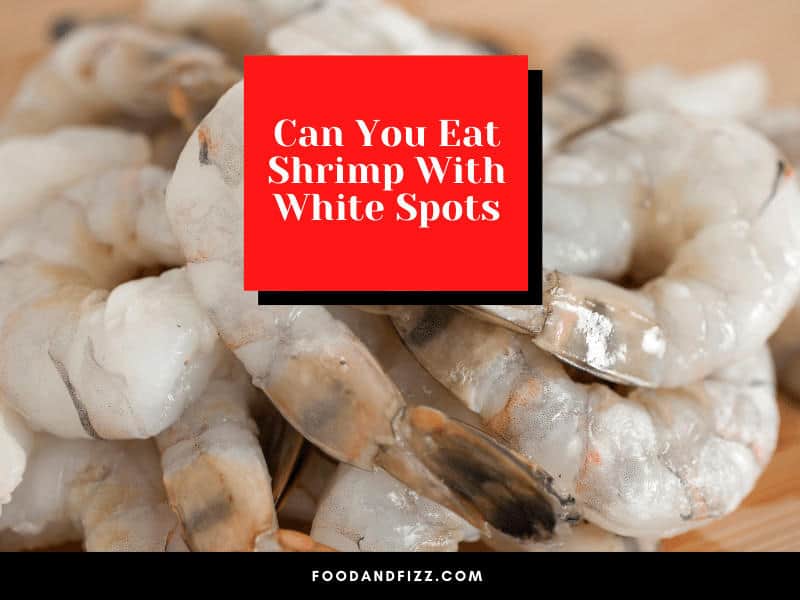Hey there! I’m a seafood lover just like you, and I totally get that panic moment when you spot those weird white patches on your shrimp. Don’t worry – I’ve done deep research on this topic and I’m here to help you figure out if your spotted shrimp is still good to eat.
What’s Up with Those White Spots Anyway?
Let me break down the main reasons why your shrimp might be rocking those white spots
1. Freezer Burn (Most Common)
- Happens when shrimp gets exposed to air in the freezer
- Creates dry, chalky white patches
- Affects texture but won’t make you sick
- Usually means the shrimp wasn’t stored properly
2. White Spot Syndrome (WSS)
- It’s a viral thing that affects shrimp
- Shows up as white spots on shell, legs, and head
- Sounds scary but doesn’t harm humans at all
- Pretty rare in store-bought shrimp
3. Protective Glaze
- Many frozen shrimp have this ice coating
- Looks white and frosty
- Melts away when thawed
- Totally harmless and normal
How to Tell if Your Shrimp is Still Good
Here’s my quick checklist to know if those spots are harmless or not
✅ Safe Spots Look Like:
- Pure white color
- Only on the surface
- Small, dot-like spots
- Firm texture underneath
- No funky smell
❌ Warning Signs:
- Yellow, gray, or black spots
- Spots deep in the flesh
- Mushy or slimy texture
- Smells like ammonia
- Large blemishes
Can I Still Cook and Eat It?
The short answer? Usually yes! If your shrimp just has normal white spots but passes the safety check above, here’s what you can do:
Cooking Methods That Work Great:
-
Grilling
- High heat helps with texture
- Add extra oil or marinade
-
Sautéing
- Quick cooking in butter or oil
- Great for adding moisture back
-
Simmering
- Perfect in soups and stews
- Helps soften freezer-burned spots
Pro Tips for Prevention
I’ve learned these tricks the hard way to avoid white spots:
- Store shrimp at 40°F or below
- Use airtight freezer bags
- Push out all the air before sealing
- Don’t keep frozen shrimp longer than 6 months
- Thaw in fridge, not on counter
Bottom Line
Look, finding white spots on your shrimp isn’t ideal, but it’s usually not a deal-breaker. Just use your senses – if it looks okay (besides the spots), feels firm, and doesn’t smell funky, you’re probably good to go. When in doubt, throw it out!
I always say better safe than sorry with seafood. But most times, those white spots are just cosmetic issues that won’t hurt you. Just make sure to cook your shrimp thoroughly (145°F internal temp) and you’ll be fine.
Would you like me to explain any part in more detail? Drop a comment below and I’ll help you out! And hey, if you’ve got any killer recipes for spotted shrimp, I’d love to hear them!
Would you like me to explain or break down any part of this article further?

What is white spot?
Its a highly contagious viral disease that affects crustaceans including prawns, crabs, yabbies and lobsters. Marine worms are also considered to be carriers of the disease.
The disease kills prawns and outbreaks can cause mass mortality in prawn farms.
Signs of white spot in prawns include:
- A loose shell with visible white spots and pink to red discolouration
- Unusual swimming patterns
- Reduced feeding
- Farmed prawns may gather at the edge or surface of ponds
White spot is widespread in prawn farming regions of Asia and the Americas, where it has led to severe economic losses.
Dead prawns on a Logan River farm in the aftermath of the 2016 white spot outbreak. (Supplied: DigsFish Services)
Is it safe to eat frozen shrimp with white spots?
FAQ
Is it okay to eat shrimp that has white spots on it?
Were they frozen? If so, white spots often form where ice crystals existed under the shell. Still completely safe to eat.
Can white spots affect shrimp?
It is one of the most important diseases affecting shrimp production globally, and in particular can cause high mortality in penaeid shrimp species such as whiteleg shrimp (Penaeus vannamei). It does not affect humans.
How can I tell if shrimp is spoiled?
- Smell: If it smells sour or overly pungent, it may be spoiled.
- Texture: Fresh shrimp should be firm and slightly springy. If it feels slimy or mushy, it’s likely bad.
- Color: Look for any discoloration or dark spots.
- Shell: If the shells are blackened or off-color, that can also be a sign of spoilage.
Why do my shrimp have white spots on the shell?
White spots on the underside of the shell are caused by calcareous deposits.
